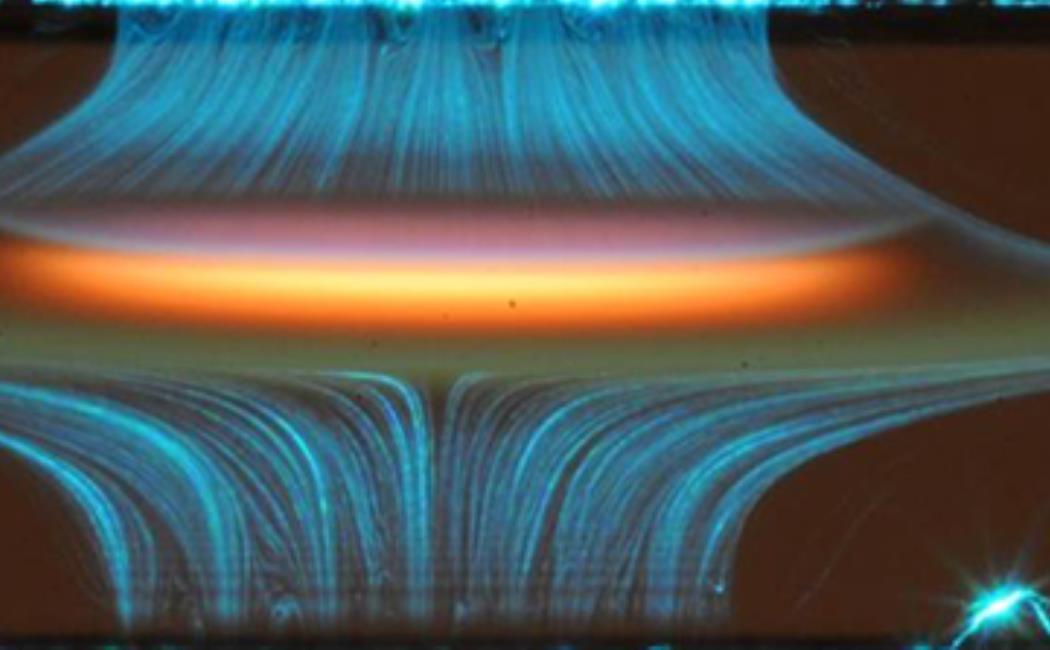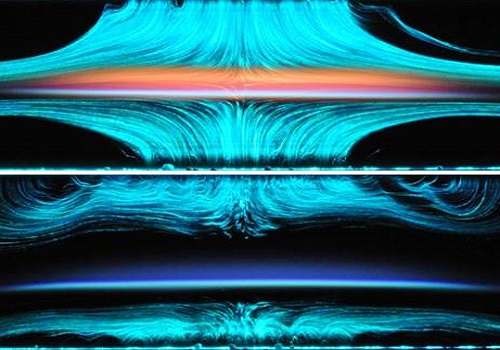


10 July, 2016

The application of a strong electric field to a sheet of flame causes major changes that can be exploited to control combustion and emissions. Top image is with no electric field; bottom image is with an electric field.
Flame is a complex and dynamic phenomenon involving a constant flow of negatively and positively charged ions and electrons. For decades, researchers have attempted to exploit this charged property to control and stabilize flame, theoretically leading to lower emissions and more complete energy utilization.
Applying an electric field that interacts with the charged particles is the most obvious means of achieving this type of flame control, but this approach has met with mixed success.
Min Suk Cha and colleagues from the University’s Clean Combustion Research Center have now developed a model and validating experiment that teases out the scientific principles that underpin electrically assisted combustion for the first time1.
“Electrically assisted combustion has been held back partly because of a lack of scientific understanding of the many phenomenological observations and partly because of a lack of perfect applications,” noted Cha. “We are now able to choose the polarity of the electric field and the electrodes to achieve the desired flame control effect as a fundamental building block for studies and applications.”
The response of flame to an electric field varies depending on the field’s direction, or its polarity. The electric field interacts with the flowing ions, changing their momentum, speed and direction, which in turn affects flame stability, flame front propagation and the generation of emission due to partial combustion. Cha and his team postulated that the nature of these interactions between field and particle could be determined by the speed of the different particles. In particular, they thought that positive ions would respond much more slowly to the electric field than much lighter, negatively charged electrons.
To test their new model, the research team had to come up with a way to measure these effects experimentally. Fortunately, the flame itself generates an electric current due to the flow of ions and electrons, and interactions with positive ions and electrons have different effects on the electric current, which can be measured with an experimental setup. The team also developed a counterflow diffusion flame setup that allowed them to control the location of the flame as well as form a quasi-one-dimensional flame in the gap between the electrodes.
“With this new scientific understanding of flame response, we are hopeful that novel electrically assisted combustion systems can be developed using scientific design rather than extensive trial and error,” Cha said.
Click here to read the article on KAUST Discovery where it was originally published.